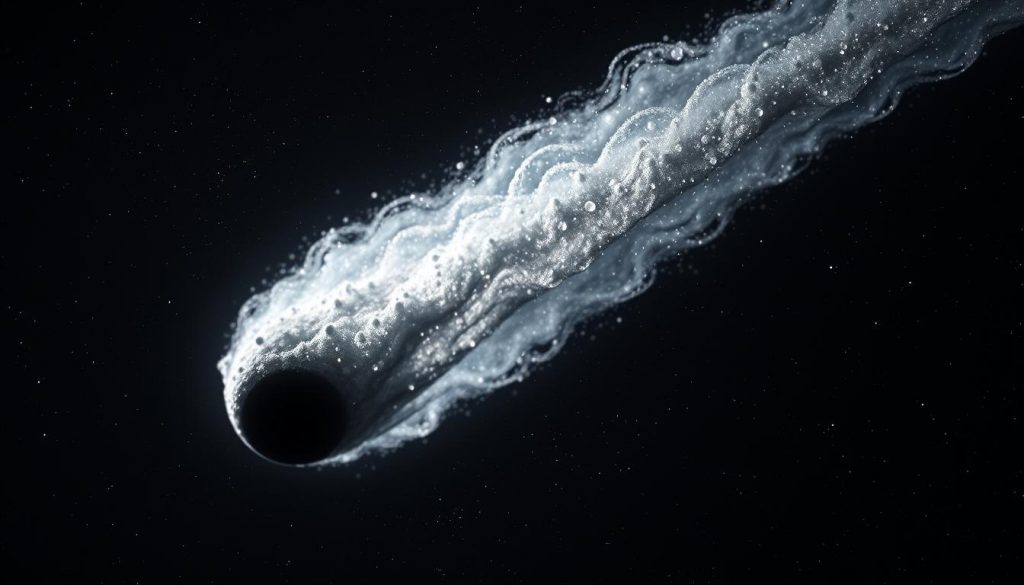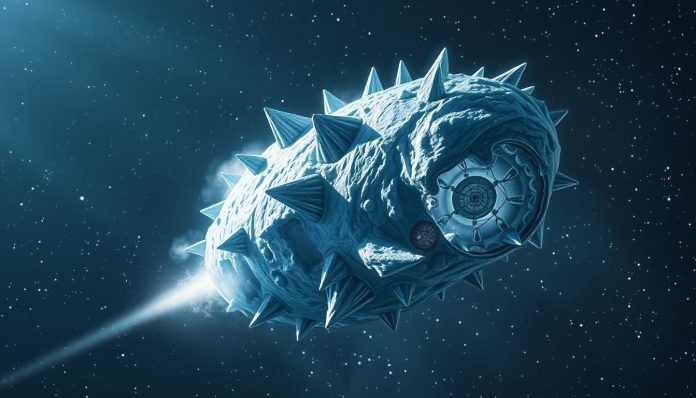Only three interstellar visitors had been recorded before 2025, yet a new object appeared on 1 July and altered that rare list overnight. It was first seen by the ATLAS survey in Chile at about 670 million kilometres from the Sun, roughly Jupiter’s distance.
Follow-up teams raced to observe the visitor. Hubble imaged it on 21 July 2025, Gemini North took additional pictures, and JWST spectroscopy in early August revealed an unusual coma chemistry.
What surprised researchers most was the CO2-to-H2O ratio of about 8:1 at roughly three astronomical units — far higher than for typical Solar System comets at that distance. That raised early debate: was the object merely typical, or did it carry materials formed around another star?
The stakes are clear: as only the third interstellar entrant, the object offers a rare laboratory to test ideas about planet formation beyond the familiar system. Scientific teams emphasised consensus built from JWST and Hubble data even as public speculation swirled.
Key Takeaways
- Discovered on 1 July 2025 at ~670 million km, triggering global follow-up.
- Only the third known interstellar visitor, after 1I/ʻOumuamua and 2I/Borisov.
- Early JWST spectra showed an unusually high CO2-to-H2O ratio (~8:1).
- Hubble and ground-based imagery refined its hyperbolic trajectory.
- The object presents a rare chance to study material from beyond our solar system.
A mysterious visitor from beyond our Solar System
Observers worldwide mobilised within hours after ATLAS flagged the new interstellar visitor on 1 July 2025. Rapid astrometry showed a clear hyperbolic path through the Solar System, a tell‑tale sign that it came from beyond the Sun’s bound family of bodies.
Discovery and first looks: from ATLAS to global follow-up
Hubble captured early images on 21 July, while very large telescopes provided spectra and refined the orbit. Oxford’s Matthew Hopkins told BBC News that kinematics suggest the object could be older than seven billion years and may have come from the Milky Way’s thick disc.
The basics: a hyperbolic trajectory through the Solar System
Early measurements placed the body on a steep, hyperbolic trajectory and at speeds inconsistent with long‑term Solar System residence. That path led teams to treat it as an interstellar visitor rather than a native object.
Key data at a glance: why astronomers say it’s so weird
JWST spectra in early August at roughly three astronomical units showed a CO2‑to‑water ratio near 8:1. Observers also reported signs of water production at unusually large heliocentric distances, a behaviour not typical of comets formed inside our system.
- Discovery: ATLAS detection on 1 July 2025 prompted global follow-up.
- Age estimate: Kinematics imply possible age exceeding seven billion years.
- Composition: CO2 dominates over water at ~3 au, prompting intense study.
- Outlook: Teams expected stronger outgassing and tail development near perihelion and planned continued monitoring.
For a fuller early account of the discovery and tracking, see a contemporary report from Scientific American: new interstellar object summary.
3I-ATLAS Stuns Scientists — Is This Really Just a Comet
Spectroscopy soon pointed to an unexpected dominance of carbon dioxide around the visitor. JWST measurements in early August showed a CO2-to-H2O ratio near 8:1 at roughly three astronomical units — about sixteen times higher than typical Solar System analogues.
Composition under the spotlight: CO2-rich coma and early water activity
The CO2-rich signature prompted proposals that the body formed in a region where CO2 ice was abundant, or where water vapour had been lost early. Researchers such as Martin Cordiner and Matthew Genge suggested water might be buried beneath insulating material, reducing early water release.
The “unexplained glow”, massive size discrepancy claims, and the missing dust tail
Hubble and Gemini images recorded a compact, forward-facing glow near the nucleus with no bright dust tail at that stage. Low dust production or very small particles can explain the lack of an extended tail without invoking exotic scenarios.
Debate and rebuttal: Avi Loeb argued the brightness could be nucleus-dominated and hinted at non-natural sources in an 18 August blog.
“The brightness profile might be dominated by the nucleus, and a forward-facing glow is notable.”
Penn State’s Jason Wright countered that interpretation, pointing out standard coma physics and imaging limits make nucleus-size claims uncertain. The episode underscored why careful photometry and repeated spectra matter when assessing any interstellar comet entering our space and system.
- Key data: JWST CO2/H2O ≈ 8:1 at ~3 au.
- Imaging: compact coma, no prominent dust tail initially.
- Interpretation: formation or buried water explains CO2 dominance; nucleus size remains uncertain.
Speculation vs scientific consensus
An unusual sunward glow in initial photographs quickly fuelled extravagant theories online.
The “alien” hypothesis gained traction because the image showed a compact bright region and the lack of a clear dust tail. Rarity of an interstellar visitor also made sensational claims more appealing to the public.
The “alien” hypothesis and why it caught attention
High-profile commentary suggested the brightness might indicate an artificial object. Such ideas spread fast on blogs and social feeds.
The scientific rebuttal: JWST, Hubble, and expert responses
Experts pointed to multi-instrument data from Hubble, JWST and ground telescopes that matched volatile-driven activity. Jason Wright publicly described the speculative analysis as objectively wrong.
“The interpretation relied on selective readings of limited imagery and ignored standard coma physics.”
What most astronomers conclude about this interstellar comet
NASA, ESA and the ATLAS survey classified the object as an interstellar comet on a hyperbolic orbit through the Solar system. Most astronomers treated it as a natural body and focused on its chemistry and dynamics over the years.

| Claim | Evidence | Conclusion |
|---|---|---|
| Artificial origin | Compact brightness in limited images | Rejected by multi‑instrument analysis |
| Natural cometary activity | JWST spectral lines; Hubble imaging; ground follow‑up | Supported by dataset |
| Unusual formation history | CO2/H2O ratio and kinematics | Active area for research |
Conclusion: a unique window into other worlds
Observatories across the globe quickly stitched together observations that clarified its nature and origin. As the third interstellar visitor after earlier entries, the object added a crucial data point beyond the solar system and challenged assumptions about comet behaviour.
Key outcomes: its CO2‑dominated coma at roughly three astronomical units, early water activity at large distances, and the initial absence of a prominent dust tail set it apart from many Solar System comets. Hopkins’s modelling suggested a thick‑disc origin and an age of more than seven billion years. Coordinated work by Hubble, JWST and ground teams allowed scientists to converge on a natural interpretation while highlighting chemical diversity among comets. The Vera C. Rubin Observatory will expand the sample, letting researchers place this visitor in broader context.
For more articles about Space, please follow the link.


